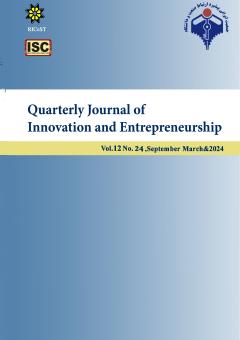The Role of Academics' Boundary-Spanning in Organizational Innovation by Mediating Organizational Agility in Technical and Engineering Faculties of Tehran State Universities
Subject Areas : New scientific findings in the fields of innovation and entrepreneurship
saeid norollahee
1
![]() ,
siroos ghanbari
2
*
,
siroos ghanbari
2
*
![]()
1 - PhD student in educational management, Faculty of Humanities, Bu-Ali Sina University, Hamedan, Iran
2 - Professor of Department of Educational Sciences, Faculty of Humanities, Bu-Ali Sina University, Hamedan, Iran
Keywords: Boundary Spanning- Organizational Agility- Organizational Innovation,
Abstract :
The purpose of the research was to investigate the role of academics' boundary-spanning in organizational innovation by mediating organizational agility in technical and engineering faculties of public universities in Tehran. The research method was mixed-exploratory (qualitative-quantitative). In the qualitative part, it was considered to identify the characteristics of academics' boundary-spanning in state universities. So, 15 faculty members of public universities were purposefully selected and interviewed. The interviews were analyzed using coding, and 48 open codes, 9 central codes were identified and they were placed in three categories: Personal characteristics, Job characteristics, and Organizational characteristics of academics' boundary-spanning were placed in three categories. The research method in the quantitative part was descriptive-correlation. The statistical population of technical and engineering faculty members of public universities in Tehran was 2189 people in 1402, which was determined by using Cochran's formula, the sample size was 327 people, and sampling was done using stratified (relative) random sampling. The data was collected using the researcher-made questionnaire of academic's boundary-spanning, questionnaire of organizational innovation and the organizational agility. Cronbach's alpha coefficient and confirmatory factor analysis were used to determine the reliability of the tools. Data analysis was done with Pearson correlation test and structural equation modeling technique with SPSS and LISREL 8.80 software. The findings showed that boundary spanning has a positive effect on organizational innovation and organizational agility, and organizational agility has a significant effect on organizational innovation. Also, the mediating role of organizational agility in the effect of boundary spanning on organizational innovation was confirmed. As a result, in order to survive in a competitive environment, higher education should innovate in the processes of education, research and scientific production by using the strategy of boundary spanning and improving organizational agility

